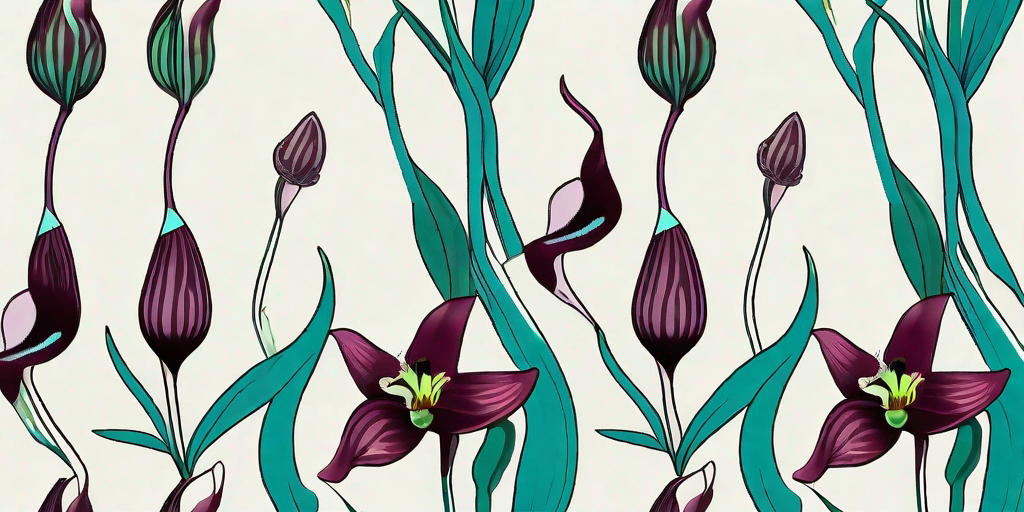
Australia, the land of kangaroos, koalas, and the Great Barrier Reef, is also home to a plethora of unique and fascinating flora. Among these, the Flying Duck Orchid stands out, not just for its peculiar name, but also for its intriguing appearance and captivating life cycle. This article takes you on a journey to discover the mysteries of this extraordinary flower.
The Flying Duck Orchid: An Introduction
Known scientifically as Caleana major, the Flying Duck Orchid is a small terrestrial orchid native to Australia. Its unusual name is derived from its remarkable resemblance to a duck in flight. But don't be fooled - this is no ordinary duck. This is a duck with a mission, a duck with a story, a duck that... well, isn't actually a duck. But let's not get bogged down in semantics.
Found primarily in the eastern and southern parts of Australia, this orchid is a master of disguise, blending seamlessly with its surroundings. This is one flower that truly believes in the saying, "Why just be a flower when you can be a duck?"
The Unique Appearance of the Flying Duck Orchid
One look at the Flying Duck Orchid, and you'll be convinced that Mother Nature has a sense of humour. The flower, which is about 20mm long, has a striking resemblance to a duck in flight, complete with a beak, wings, and a body.
The 'duck's body' is actually the labellum of the flower, which is hinged at the base. This allows it to move, giving the illusion of a duck bobbing up and down in flight. The 'wings' are the petals and the 'beak' is the column of the flower. The flower is usually a rich, reddish-brown colour, further enhancing its duck-like appearance.
The Life Cycle of the Flying Duck Orchid
The Flying Duck Orchid has a fascinating life cycle, which is as unique as its appearance. It flowers from September to January, with each plant producing one to four flowers. The flowers are pollinated by male sawflies, which are attracted to the flower's scent and colour.
When a sawfly lands on the 'duck's body', the labellum snaps shut, trapping the insect. The sawfly is then forced to crawl out of the flower, in the process picking up or depositing pollen. Once the sawfly has left, the labellum reopens and the flower is ready for the next visitor. Talk about a clever strategy!
Conservation Status and Threats
Despite its charm and uniqueness, the Flying Duck Orchid is facing several threats. Its habitat is being destroyed due to land clearing for agriculture, urban development, and invasive species. Climate change is also posing a significant threat to its survival.
The orchid is currently listed as 'Not Threatened' under the Australian Government's Environment Protection and Biodiversity Conservation Act 1999. However, its population is decreasing, and conservation efforts are needed to ensure its survival.
FAQs about the Flying Duck Orchid
Where can I find the Flying Duck Orchid?
The Flying Duck Orchid is found in the eastern and southern parts of Australia, including New South Wales, Victoria, Tasmania, and South Australia. It prefers open forests, woodlands, and heathlands.
Can I grow the Flying Duck Orchid at home?
While it's not impossible to grow the Flying Duck Orchid at home, it's quite a challenge. The orchid has a symbiotic relationship with a specific type of fungus, without which it cannot survive. So unless you're willing to recreate its natural habitat in your backyard, it's best to admire this flower in the wild.
Why is it called the Flying Duck Orchid?
The name 'Flying Duck Orchid' comes from the flower's uncanny resemblance to a duck in flight. With a little imagination, you can see the 'duck's body', 'wings', and 'beak' in the flower.
Conclusion
The Flying Duck Orchid is a testament to the wonders of nature. Its unique appearance, intriguing life cycle, and the challenges it faces serve as a reminder of the importance of conserving our natural heritage. So the next time you're in Australia, keep an eye out for this remarkable flower. Who knows, you might just spot a 'duck' taking flight!
References
- Orchids of Australia, Jones, D.L. (2006)
- Australian Native Orchids, Bates, R. and Weber, J. (1990)
- Field Guide to the Orchids of New South Wales and Victoria, Bishop, T. (2000)















